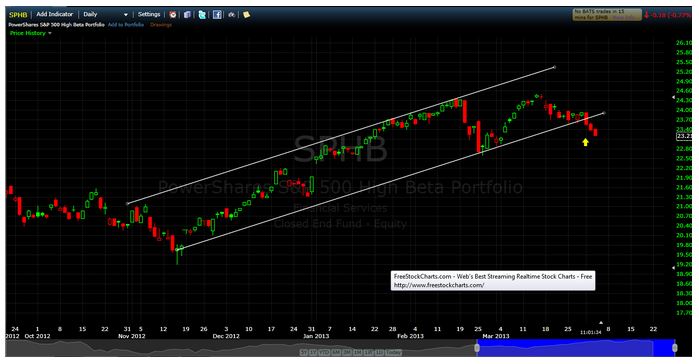One of the strategies we follow for our growth portfolios is a version of the “Sell in May, buy in October” seasonality promoted by The Stock Traders Almanac.
However, a cash position for six months can be a risky proposition, considering the potential lost opportunity if the market has a (not so rare) summer rally.
We therefore follow the relationship between SPHB (the PowerShares S&P 500 High Beta Index ETF) and SPLV (the PowerShares S&P 500 Low Volatility Index). Each ETF holds 100 of the S&P 500’s stocks – the highest beta and lowest volatility stocks, respectively.
During the strongest seasonal periods we own SPHB, and during the less favorable months we switch a portion of our ETF Seasonal Growth Portfolio to SPLV. While still a month away from the official “Sell in May” trigger point, we’ve made the move early this year as we’re seeing a strong shift in performance from SPHB to SPLV, as shown below.
What is startling is that despite the nosedive in SPHB (red line), SPY (yellow line) has been positive, meaning the move to lower volatility stocks has been strong enough to move the entire index higher.
Technically, SPHB has also broken trendline support established from its uptrend starting in mid-November, as seen in the chart below:
While a lot can still happen in May, I’ve chosen to be cautious with this portfolio. I do think U. S. economic data can support a continued rally, but I continue to be spooked by events in Europe. While that is a subject for another post, I just can’t find a way to do the math and see an end result for European banks that isn’t a complete disaster. And I don’t think anyone really has an answer as to how much of an effect the apparently unavoidable bailouts will have on our markets.
For now, SPLV seems to be a good way to participate in the market, with less risk.
Disclosure: No positions mentioned were held in Covestor client accounts as of March 31, 2013




